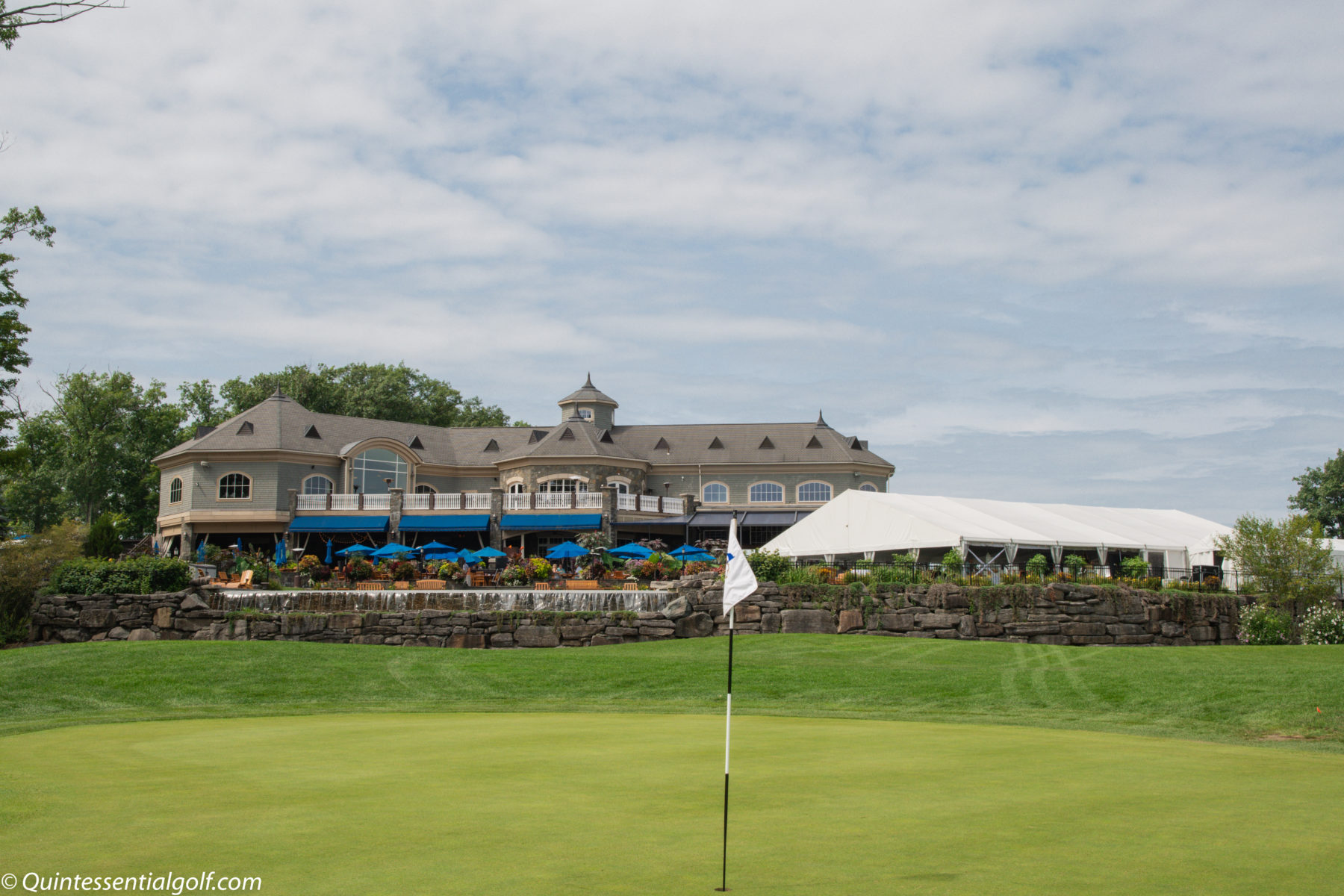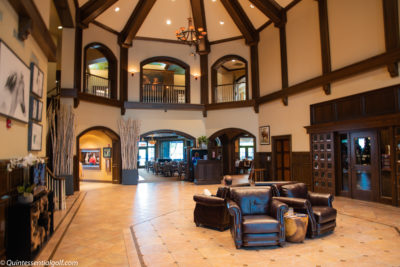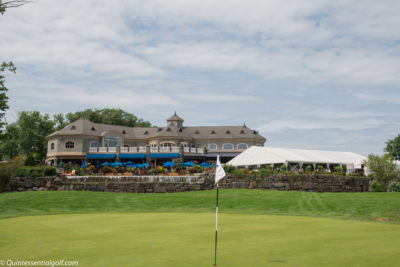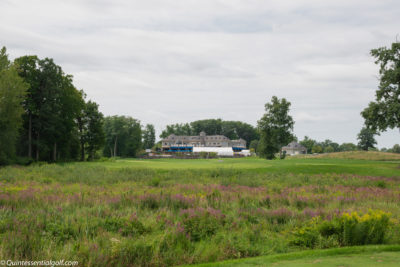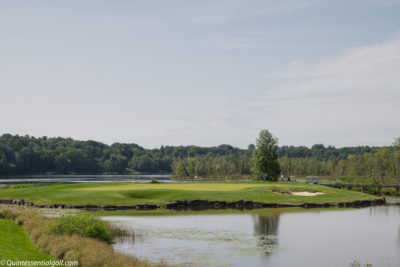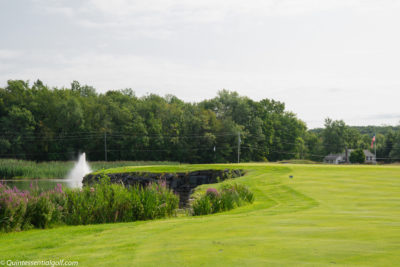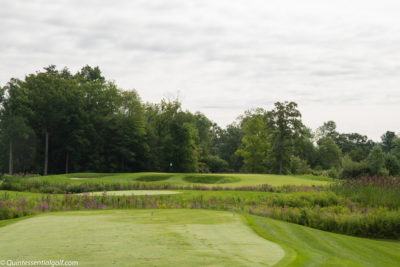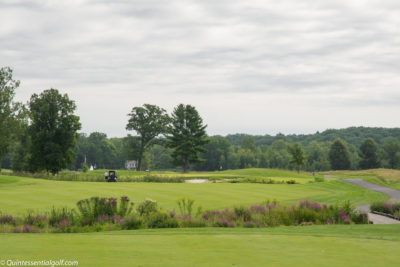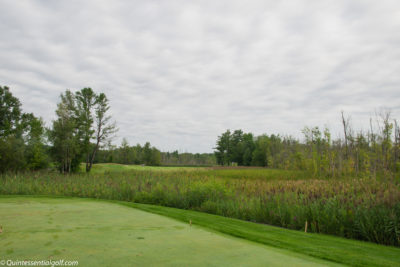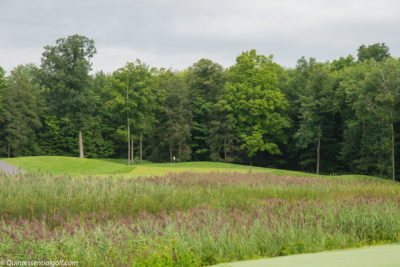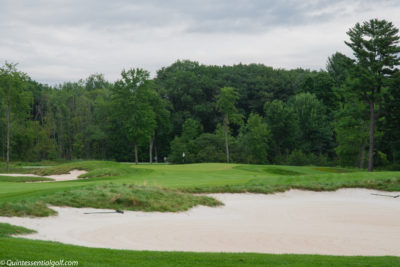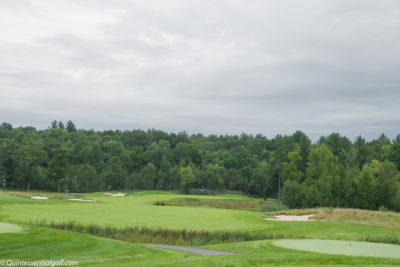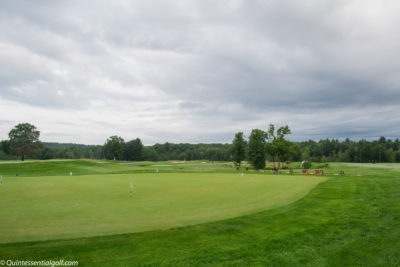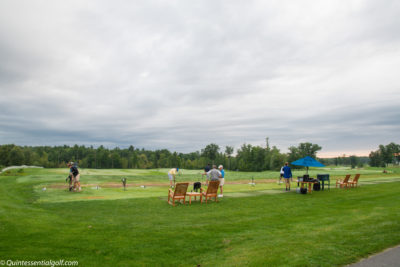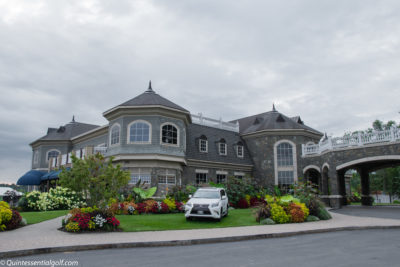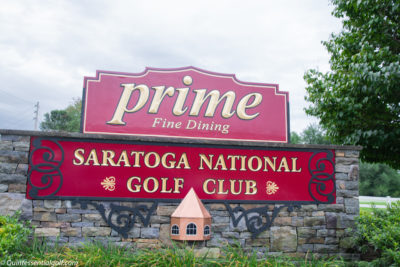Saratoga Springs, in upstate New York, has always been a town of elegance, sport, and spectacle. In the 19th century, wealthy New Yorkers and Bostonians fled the city heat for its cool air, mineral waters, and grand hotels. By 1863, only weeks after the Battle of Gettysburg, horse racing put the town on the sporting map when John Morrissey staged Saratoga’s first thoroughbred meet. Today, the Saratoga Race Course remains America’s oldest major sporting venue.
It’s in this tradition that Saratoga National Golf Club was born in 2001. Carved from a former horse farm just outside the village, the club extends the town’s legacy of competition and leisure into the modern era. Designed by Roger Rulewich, a protégé of Robert Trent Jones Sr., the course embraces the land’s natural beauty—meandering marshes, six ponds, blue limestone walls, and more than two dozen wooden bridges—all framed by the rolling foothills of the Adirondacks.
First Impressions
Arriving at Saratoga National feels like entering a private estate. A stone gatehouse welcomes you onto a winding drive lined with ponds and fountains, leading to a Victorian-style clubhouse that could pass for one of Saratoga’s legendary hotels. Inside, hardwood floors and chandeliers set an opulent tone. Outside, sweeping terraces with fire pits and an infinity pool overlook the 18th green. The steakhouse is among the best in town, and the pro shop, The National, outfits golfers in classic Saratoga style.
Service Worthy of the Setting
From the moment bags are dropped, the club delivers country-club service without the exclusivity. Attendants anticipate every need, carts come equipped with GPS and coolers of ice and water, and practice facilities rival those of any private club. Multiple ranges, a large putting green, and a short-game area are all meticulously kept, and the balls on the range? Titleist, of course. The staff—golf pros, bag room, restaurant servers—treat every guest like a member, reinforcing the sense that this is something more than just another daily-fee course.
The Course
Rulewich’s design is both visually striking and strategically demanding. Ryegrass fairways, bentgrass greens, and thick fescue rough present immaculate playing surfaces, though the marshland soils can make the layout soft after heavy rain. Accuracy is the key: the course rewards drives in the fairway and punishes misses with water, wetlands, or rough that swallows golf balls whole.
The par threes are particularly stout. The 15th, the shortest at 177 yards, is an island green that demands as much nerve as it does precision. The par fives provide the real drama, especially the 13th, a 590-yard classic. After a tee shot over a stream, players face a second shot over water with two distinct choices: a long carry left to a wide fairway lined by water, or a shorter carry right to a narrower landing squeezed by bunkers. The approach into a slender green guarded on three sides by water is one of the most exhilarating shots in the region.
No homes intrude on the routing, and each hole feels carved from nature rather than imposed upon it. The back nine, with its marsh crossings and water carries, is both scenic and strategic—testament to Rulewich’s talent for creating holes that are as memorable to look at as they are to play.
A Saratoga Classic
Green fees soar 50% during Saratoga’s six-week racing season from mid-July through August, when the town swells with visitors. Yet for golfers who value history, hospitality, and a true championship test, the premium is worth it. Saratoga National is one of the few public courses in America that delivers the complete private-club experience—elegant facilities, first-class service, and a course that demands both strategy and nerve.
In a town where elegance and sport have been intertwined for more than 150 years, Saratoga National has staked its claim as the modern heir to that tradition. Here, golf doesn’t just complement Saratoga’s history—it becomes part of it.
Explore other Northeast golf course profiles from Quintessential Golf Magazine

